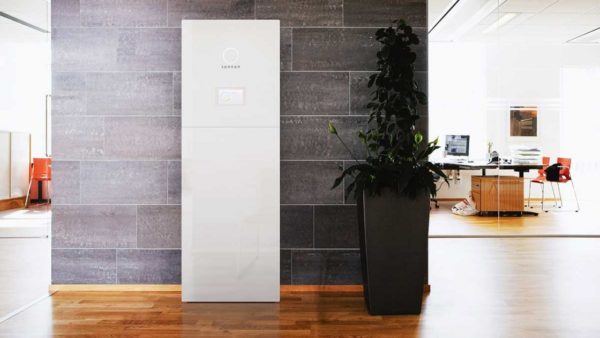
Solar and battery storage will be included as a standard feature in all newly built houses in Australia within just a few years’ time, a key solar and building industry player has predicted.
CSR Bradford – whose NSW-based company started in insulation more than 80 years ago, and has since expanded into a broader range of energy saving building materials, as well as solar and storage through Bradford Solar – is an accredited Tesla Powerwall reseller, and has been watching the growth of the battery storage market closely over the past few years.

CSR Bradford’s executive general manager, Anthony Tannous, says that in the few months since consumers got wind that Tesla was releasing a new and improved – and yet cheaper – version of its home battery, the Powerwall 2, his company alone has had close to 1,000 inquiries about the product.
But the market that Tannous sees as particularly fertile is in new housing, where he says the addition of solar and storage is rapidly becoming a standard feature of off-the plan homes.
Certainly, that is what CSR Bradford itself is doing in its partnership with Victorian housing developers Arden Homes, which sees the company include the Tesla Powerwall as a standard in every new home.
And they’re not the only ones. As we reported here last July, a mini-suburb on the outskirts of the Melbourne CBD being developed by Glenvill Homes will include rooftop solar and Tesla battery storage as standard design features of its 60 new homes.
A separate Melbourne green housing development – a 49 residence project owned by local developer Codstream and sited alongside Merri Creek in Northcote – will include rooftop solar, a total of around 160kW, and Tesla battery storage throughout: 7kWh Powerwalls in each of the 20 townhouses and a larger “Powerpack” of as-yet undetermined size in the 29-residence apartment building.
In another CSR Bradford collaboration, this time with NSW building group Mojo Homes, the Powerwall is being recommended as an optional extra.
“I have a vision that every house built in a few years time will have a battery installed, it just makes so much sense,” Tannous told One Step Off The Grid in an interview on Tuesday.
“We’ve been working with most of the major builders across Australia and a lot of them are starting to include storage as standard… while others offer it as an upgrade,” he said.
“And that will just gain more momentum.”
A key driver of that momentum, of course, is the falling cost of battery storage technology which, in turn, has been driven down by some of the key industry players, like LG Chem and Tesla.
 Tesla’s 14kWh Powerwall 2, for example, which is set to arrive on Australian shores in April, offers twice the capacity of its predecessor at nearly half the cost per kilowatt-hour, and comes in a streamlined box that is one-third smaller than the Powerwall 1. Tesla, itself, has predicted all solar homes – new or existing – will have battery storage within 10 years.
Tesla’s 14kWh Powerwall 2, for example, which is set to arrive on Australian shores in April, offers twice the capacity of its predecessor at nearly half the cost per kilowatt-hour, and comes in a streamlined box that is one-third smaller than the Powerwall 1. Tesla, itself, has predicted all solar homes – new or existing – will have battery storage within 10 years.
Add to this the 2016-17 summer of record-breaking heat waves and unpredictable power supply and you have fertile ground for home battery market growth.
“Those black outs and threats of blackouts increased peoples’ awareness, people are doing more research into how they can protect themselves by having solar and storage,” Tannous said.
“(The Powerwall 2 is) twice the capacity, at a not much higher price, that enables you to …store the energy during the day, giving you enough power to cover consumption during the night.”
Tannous says that customers can install a Powerwall 2 with a 5kW solar PV system for $19,000. He says 5kW of solar is “ideal” for the capacity of Tesla’s new 14kWh lithium-ion battery.
“The savings are there,” he added. “A 5kW system will see households save between $2,300 and $2,500 on their electricity bills a year.”

Sophie is editor of One Step Off The Grid and deputy editor of its sister site, Renew Economy. Sophie has been writing about clean energy for more than a decade.
